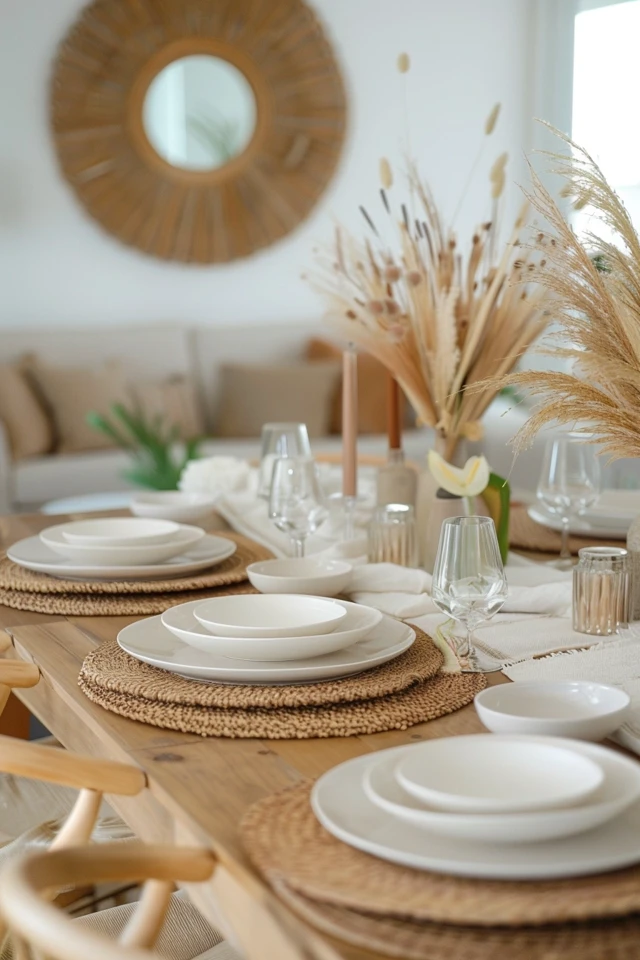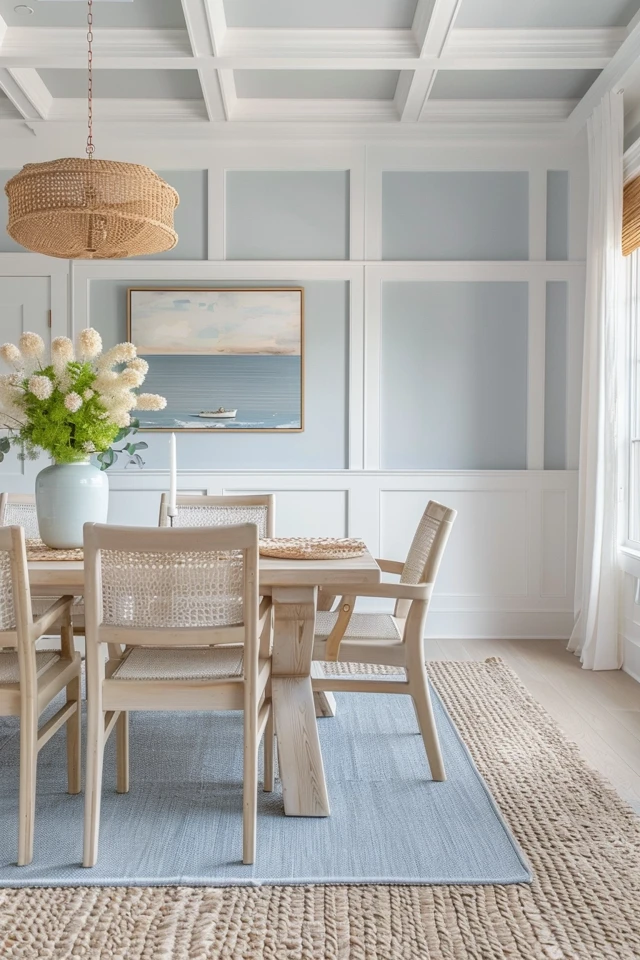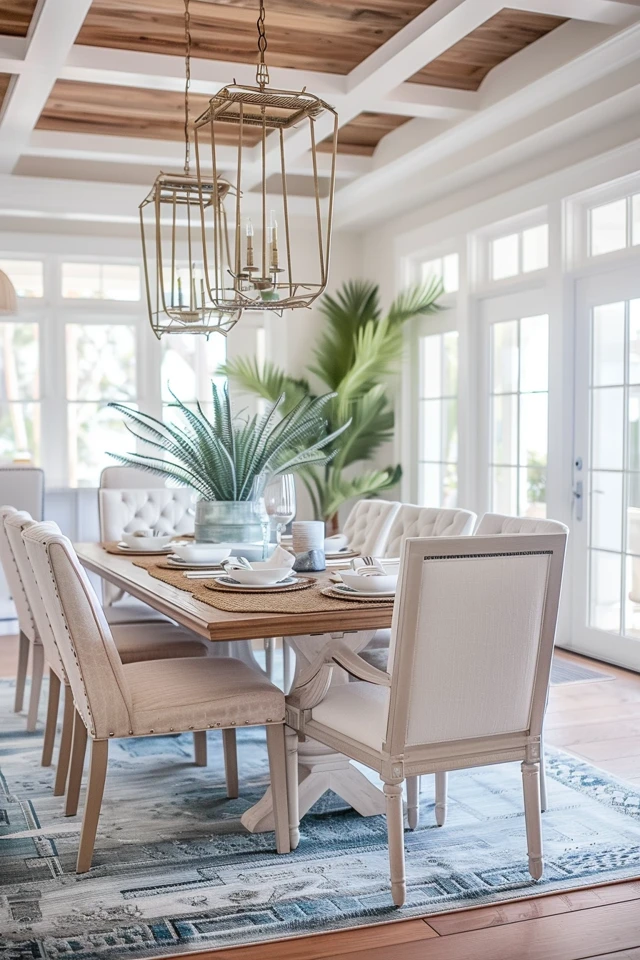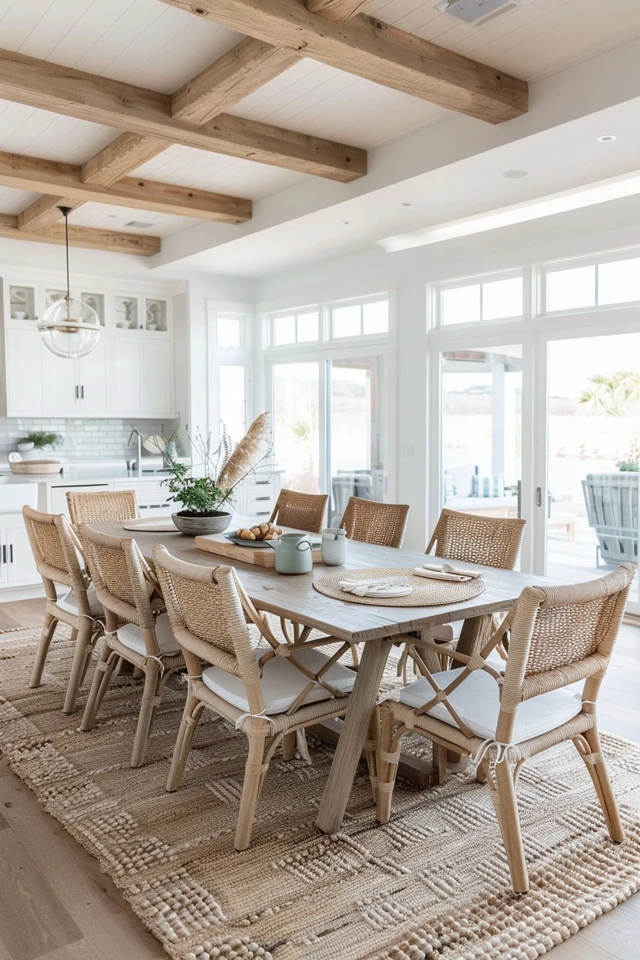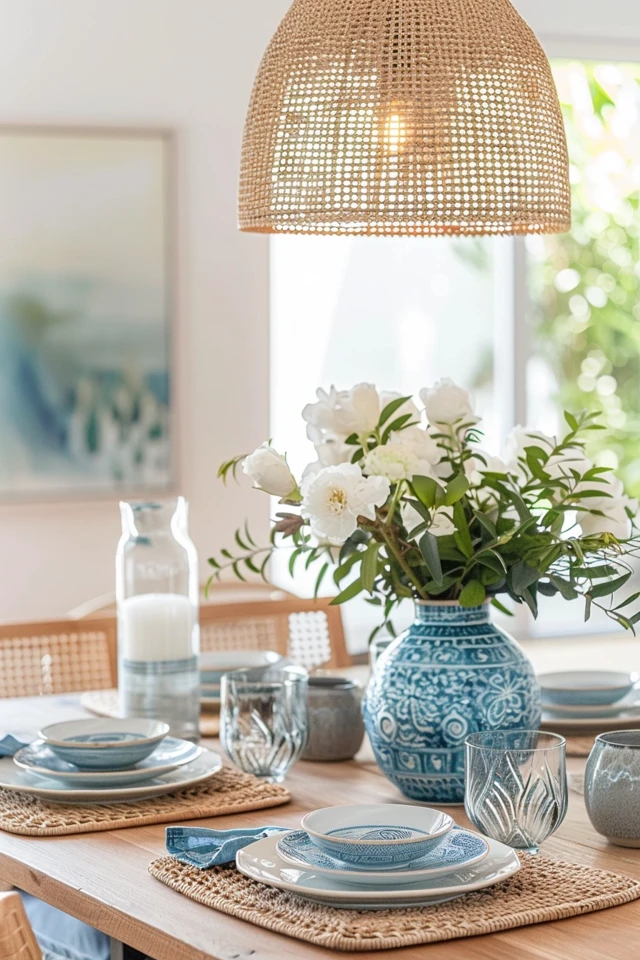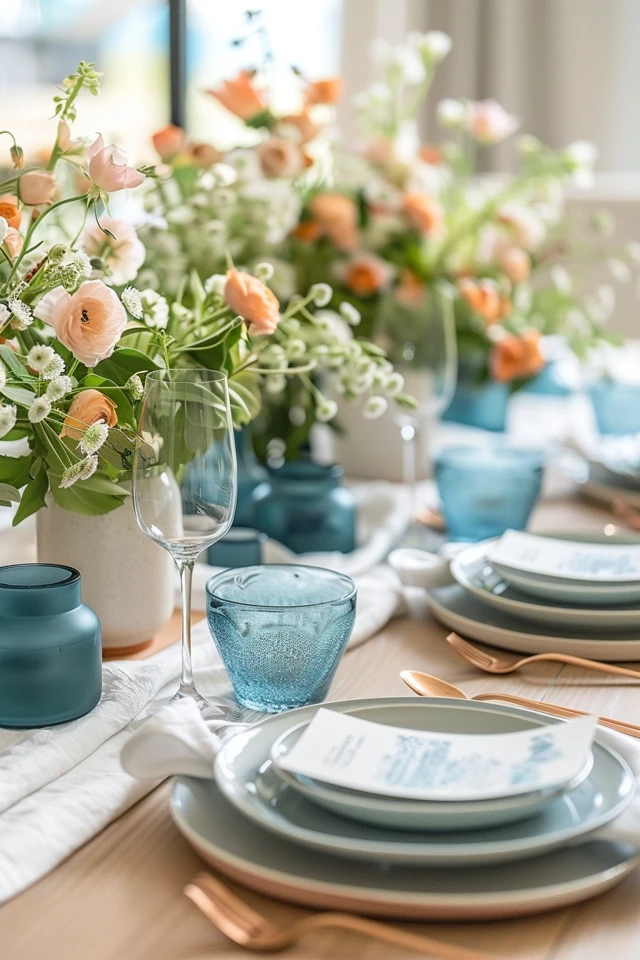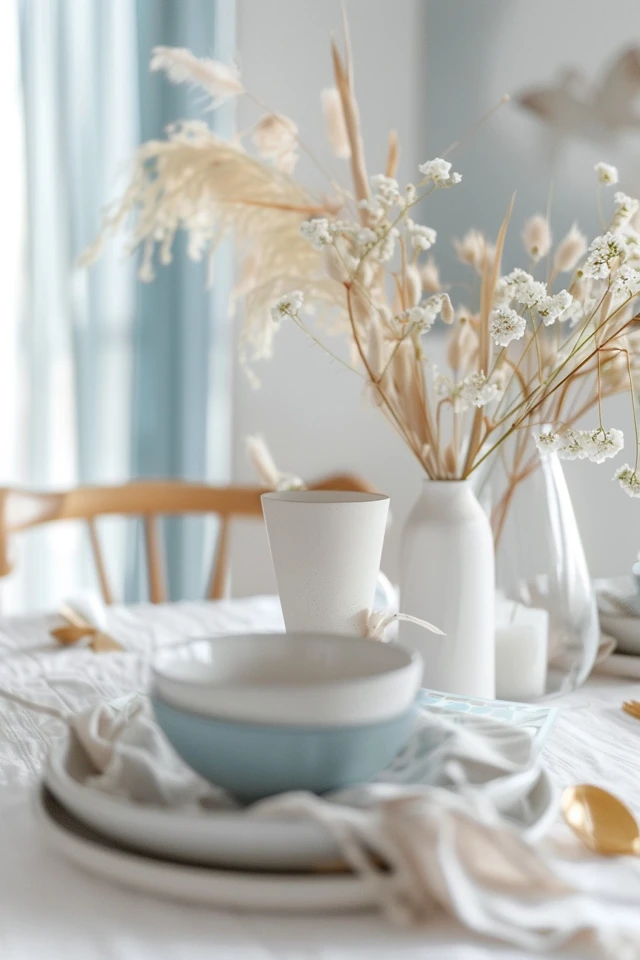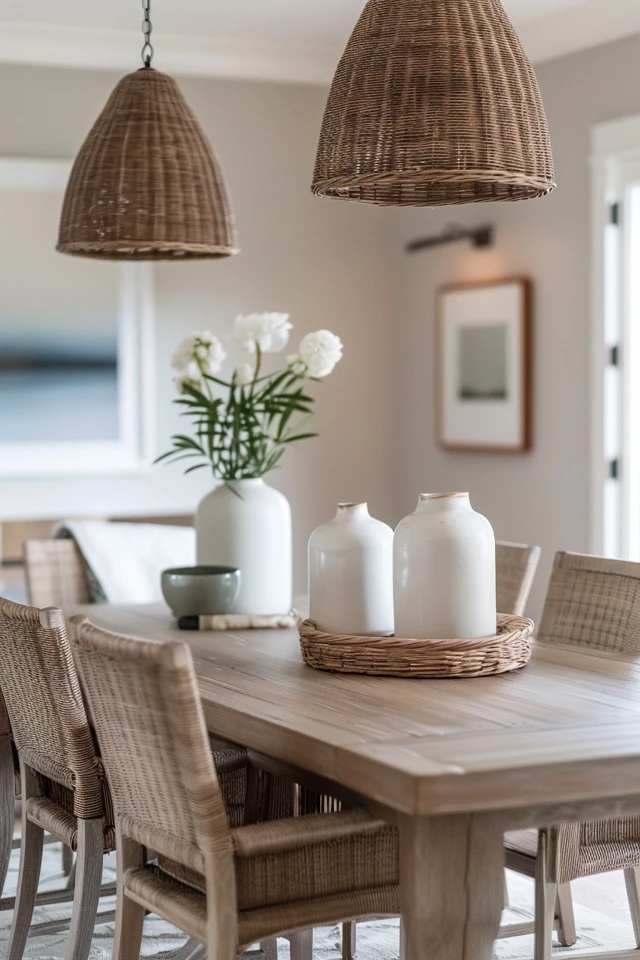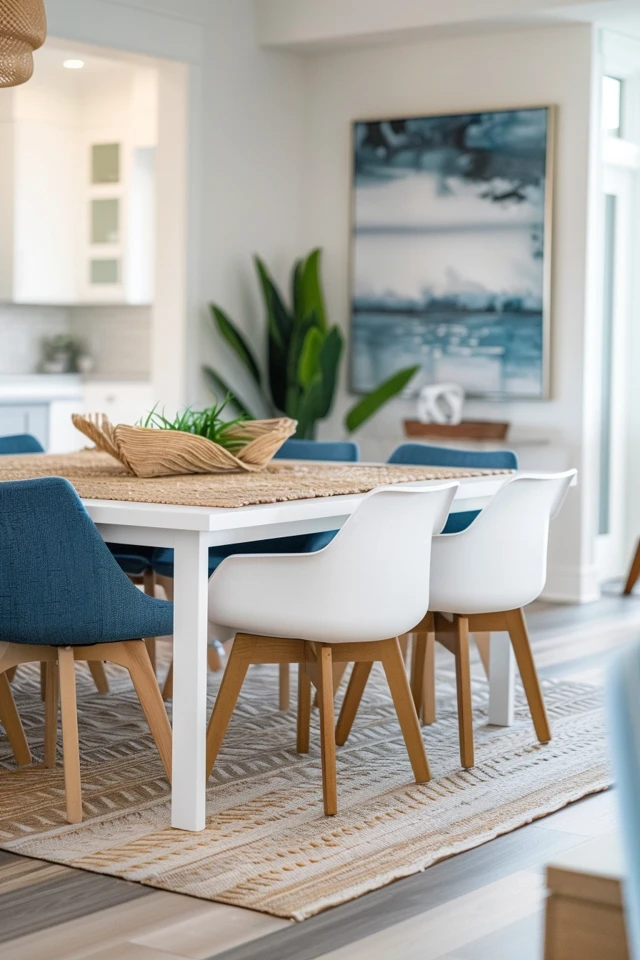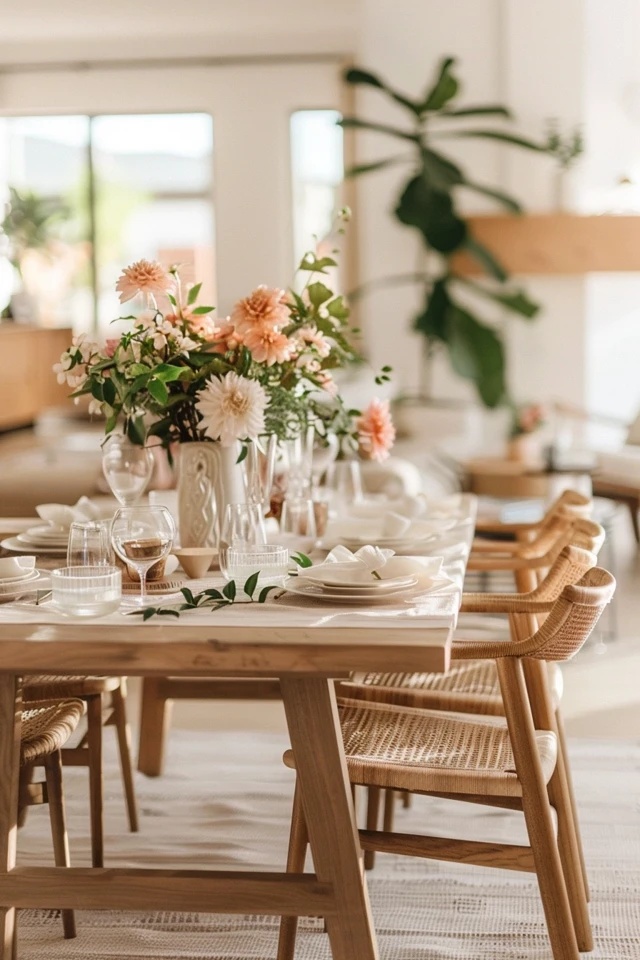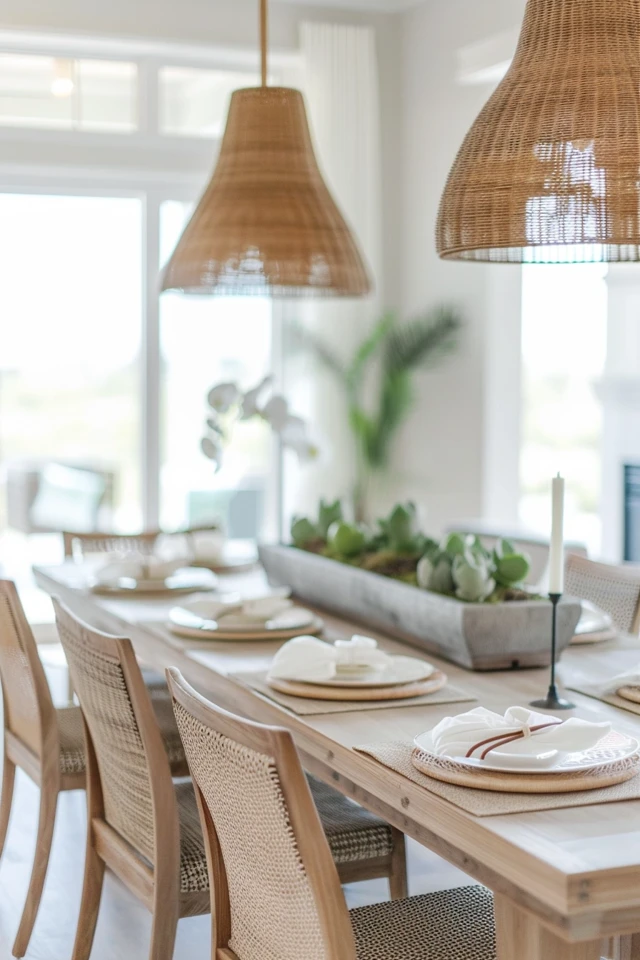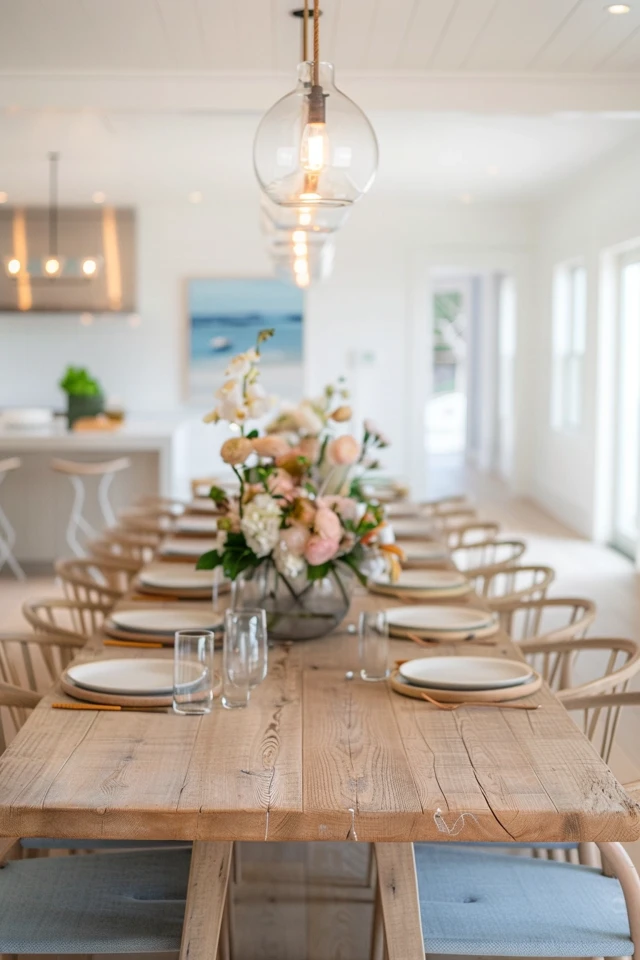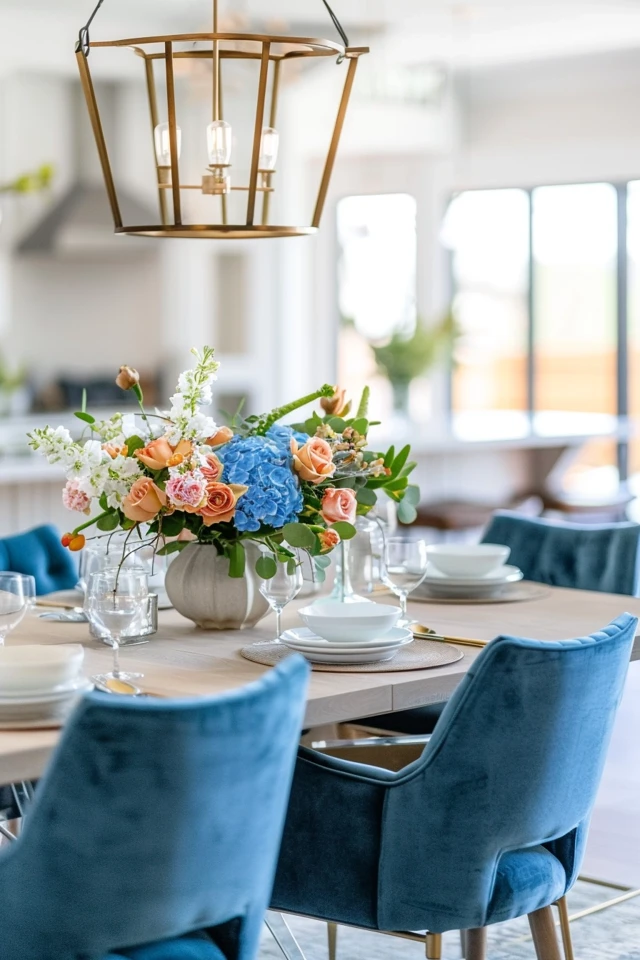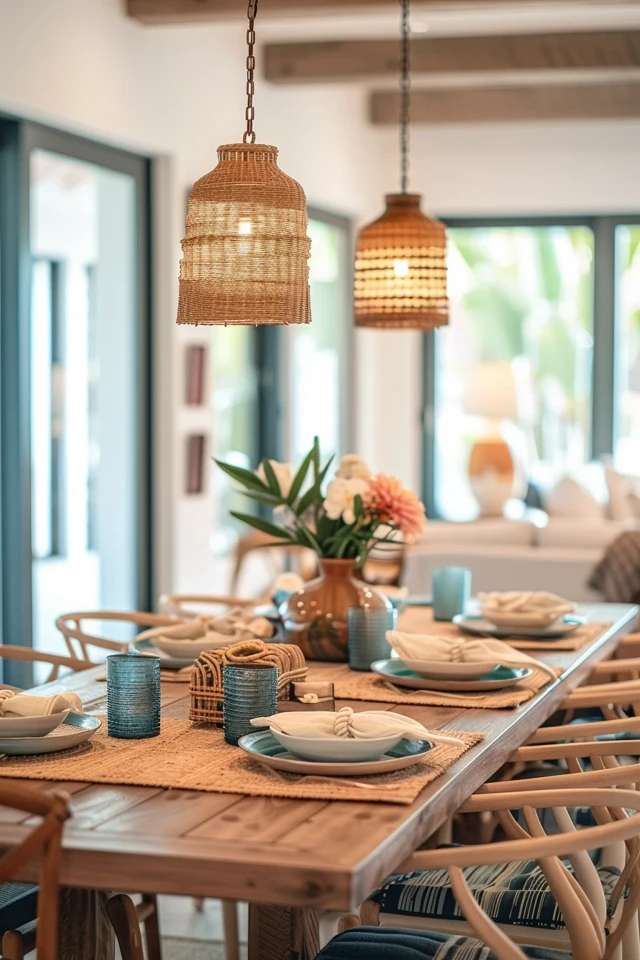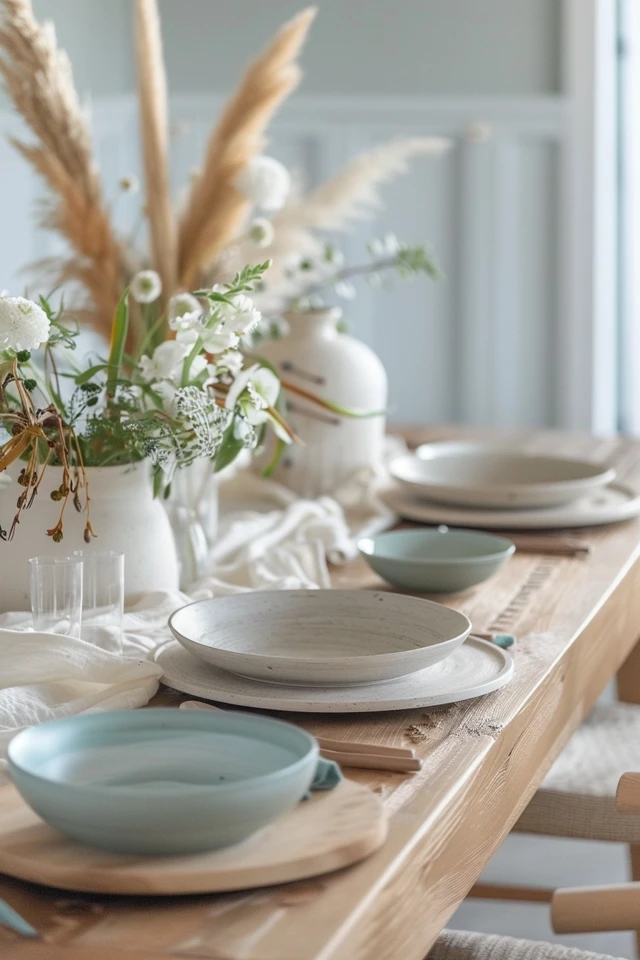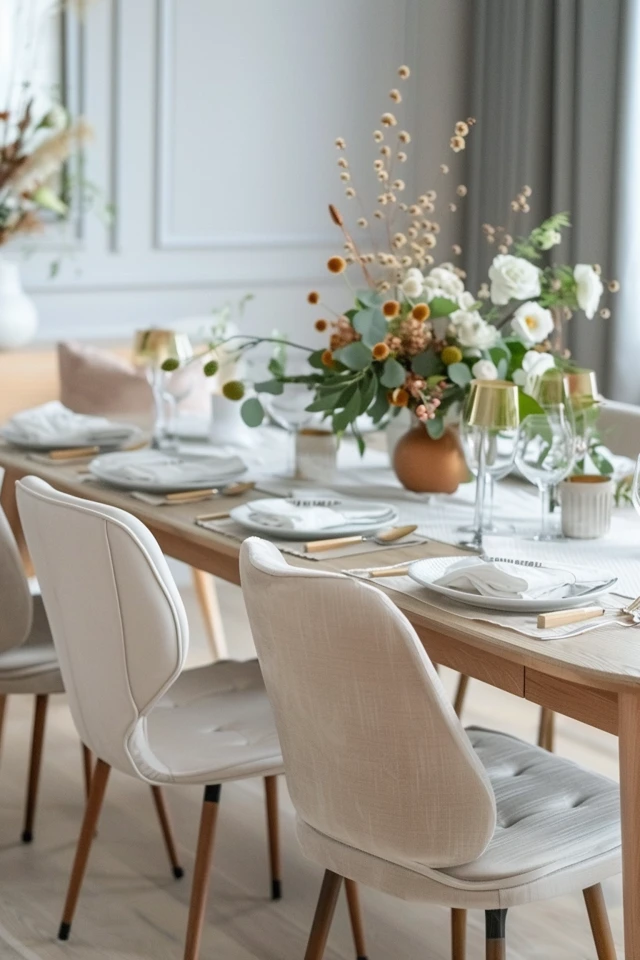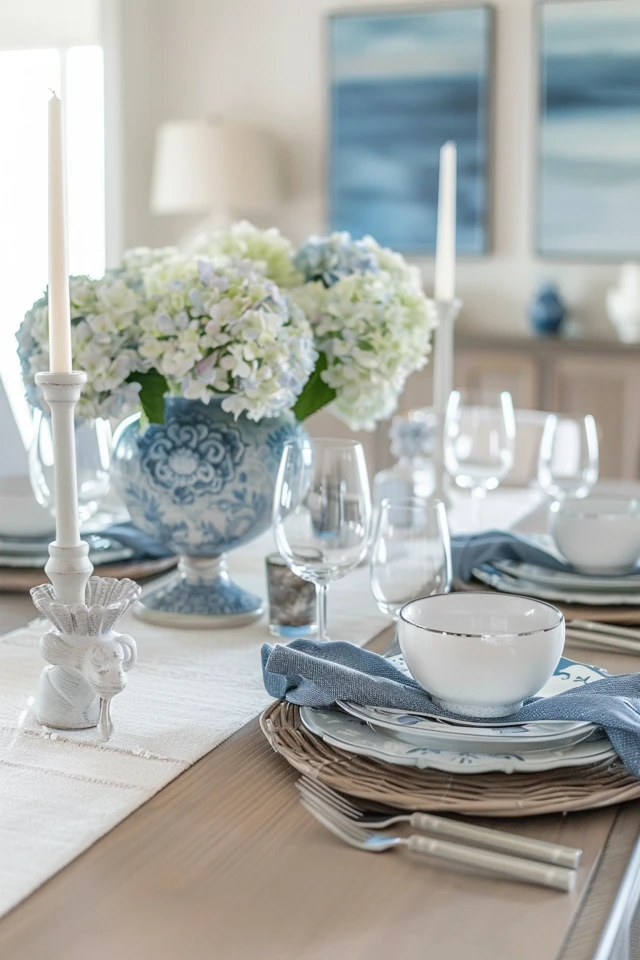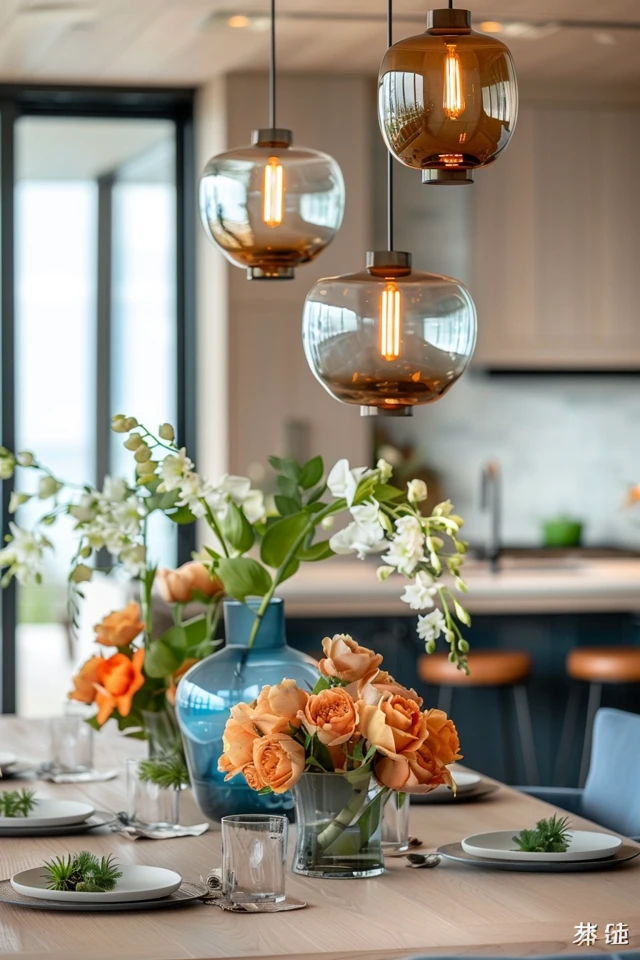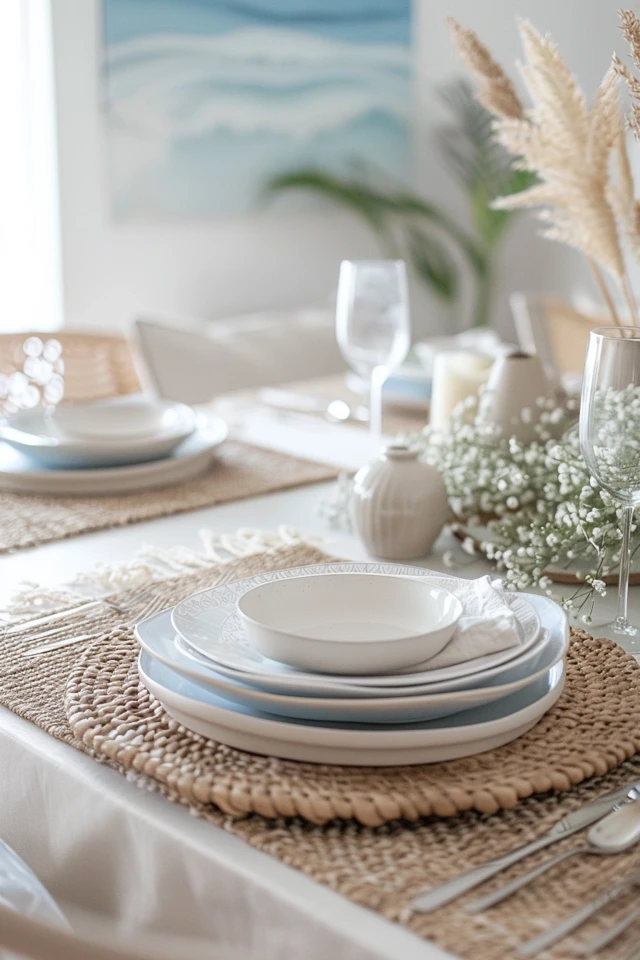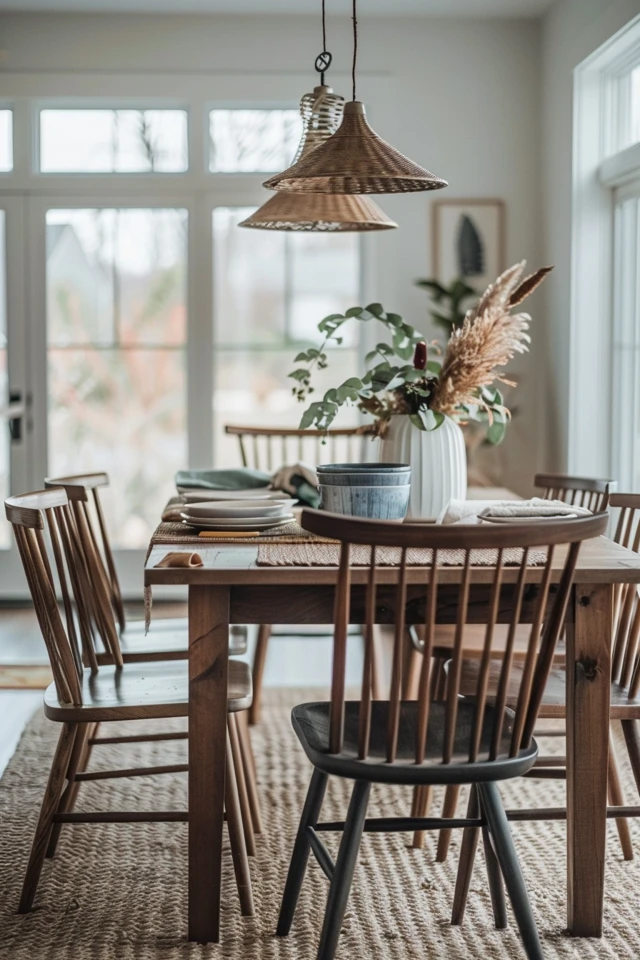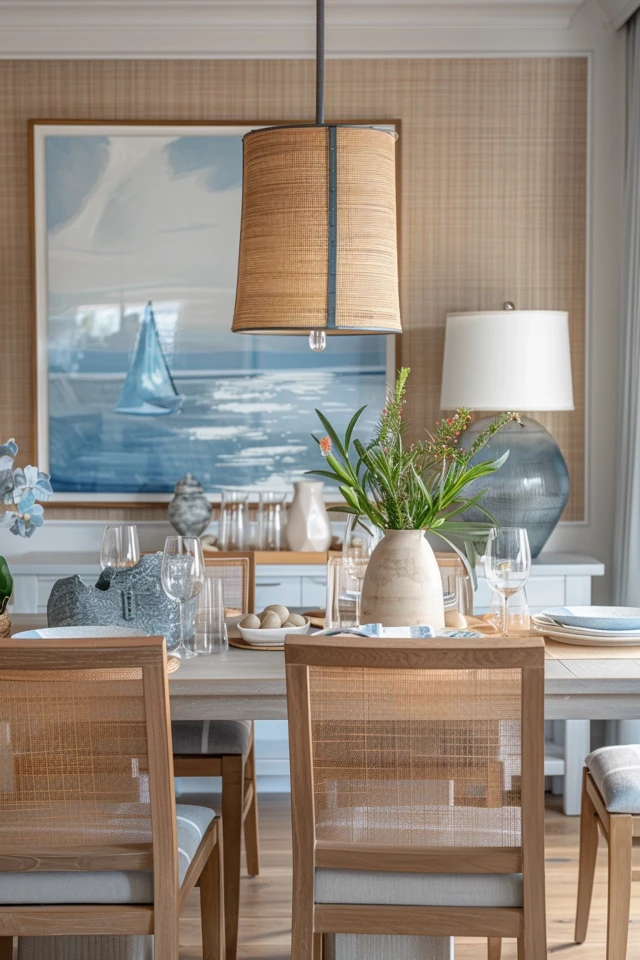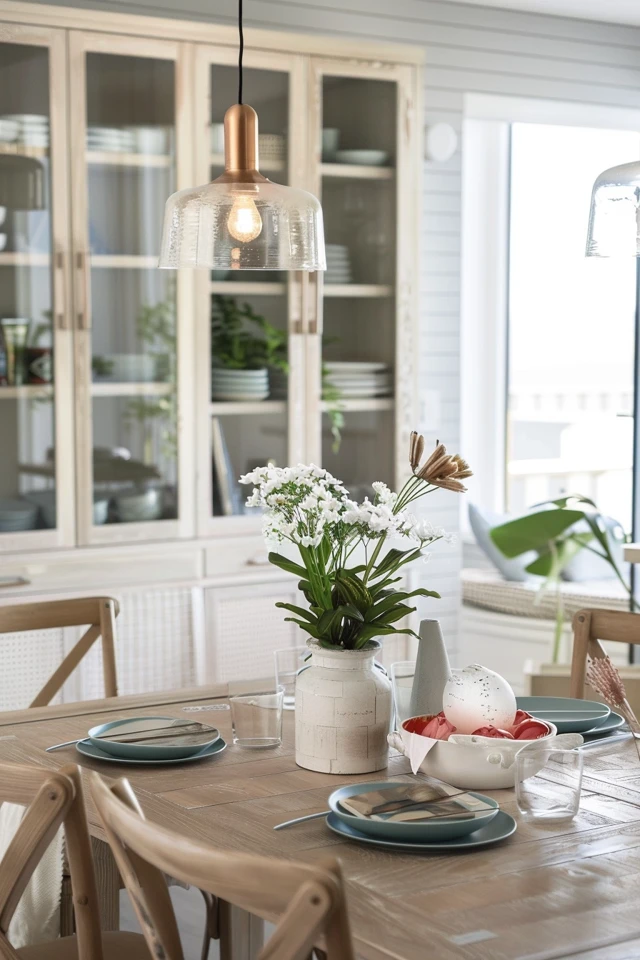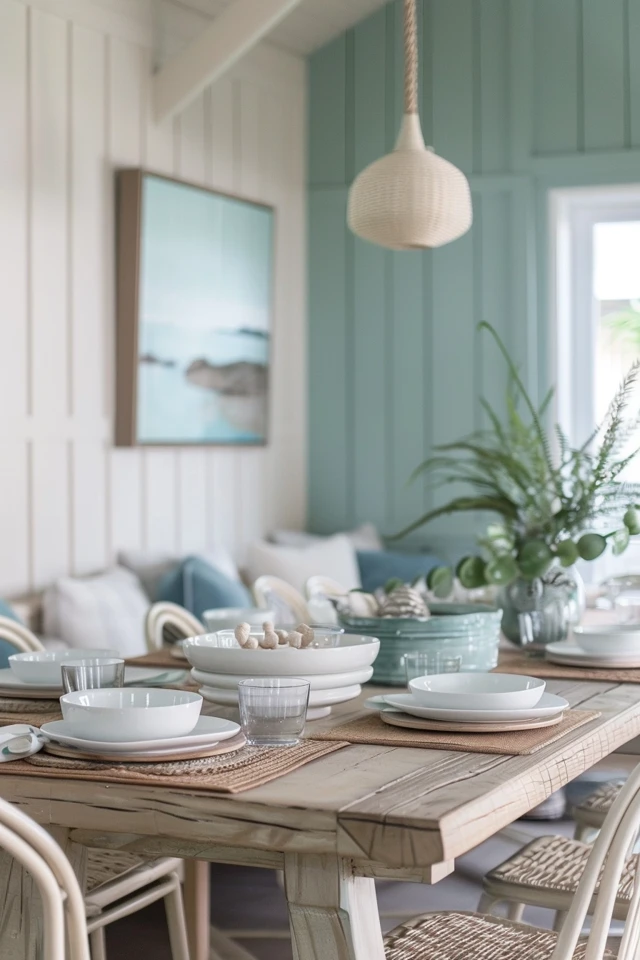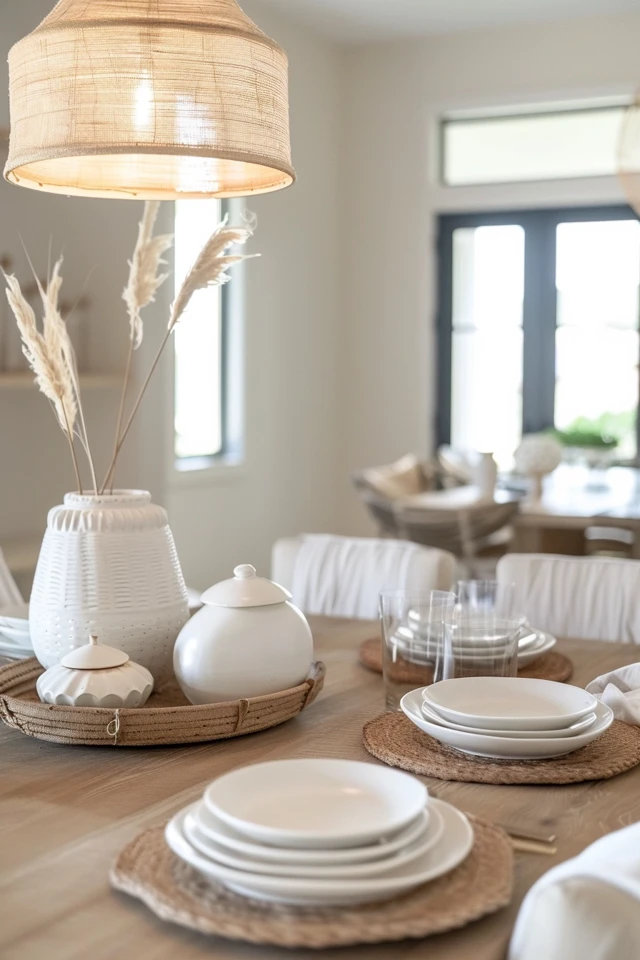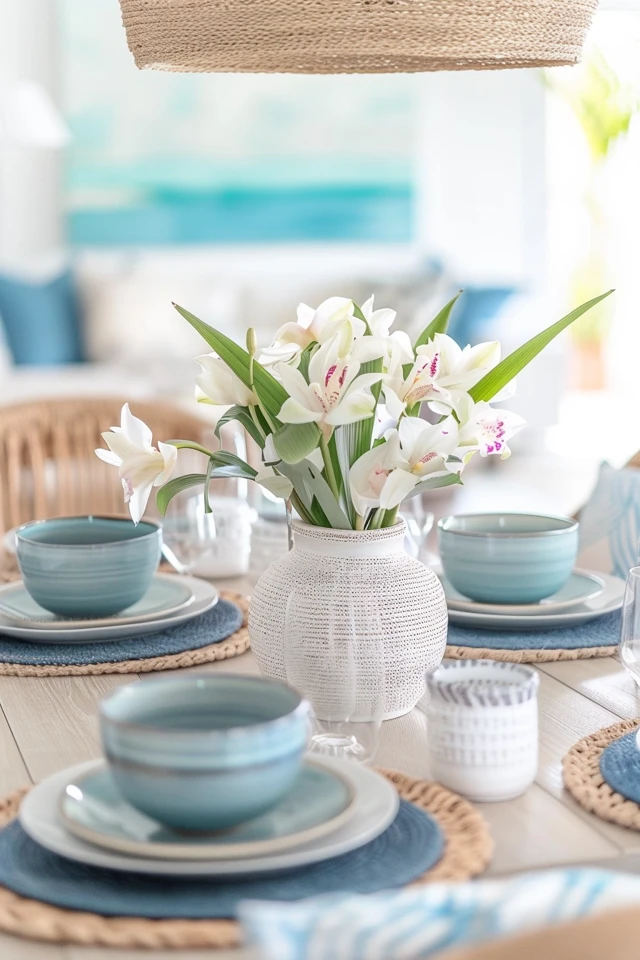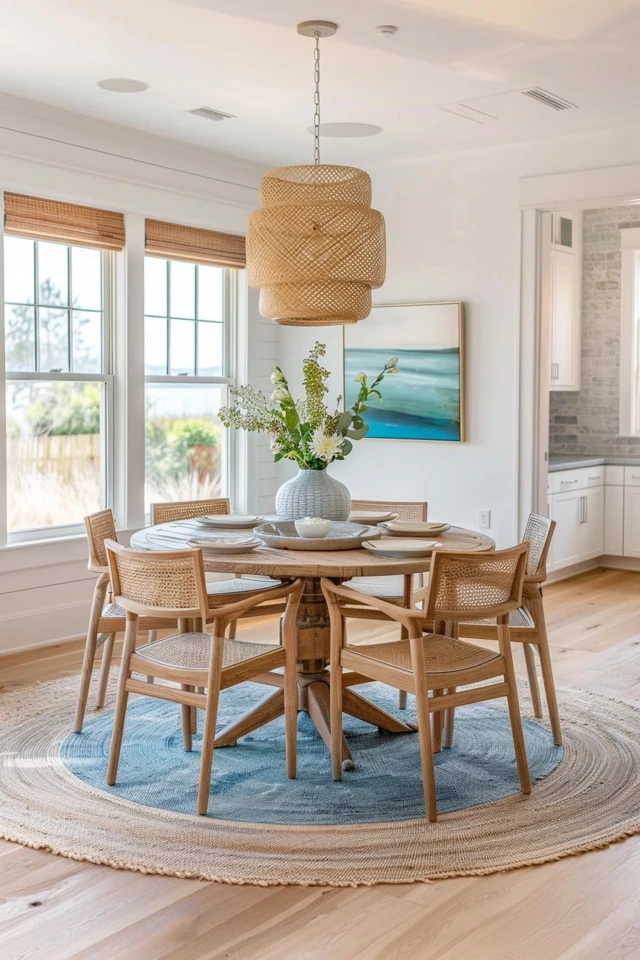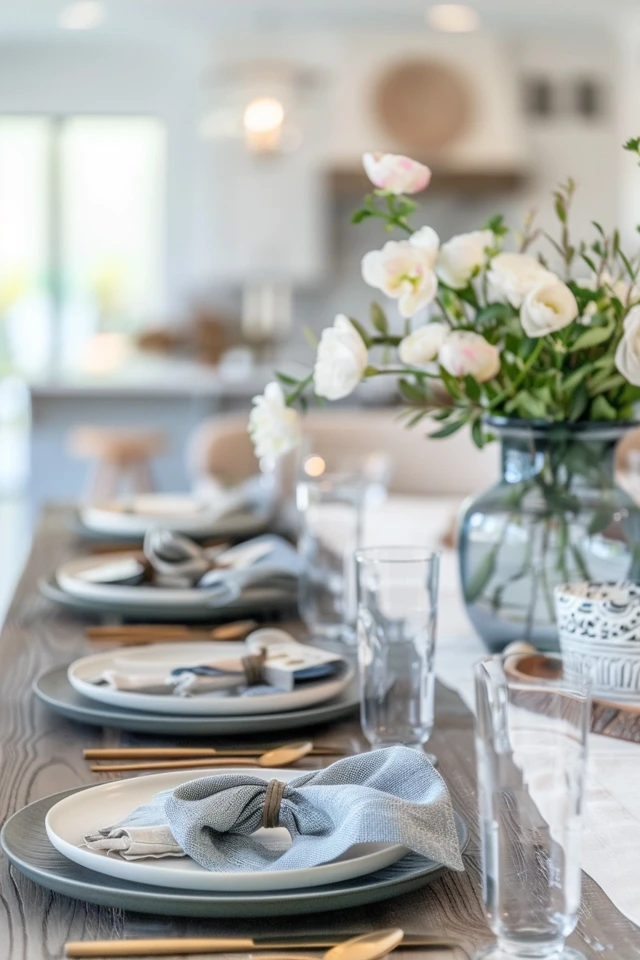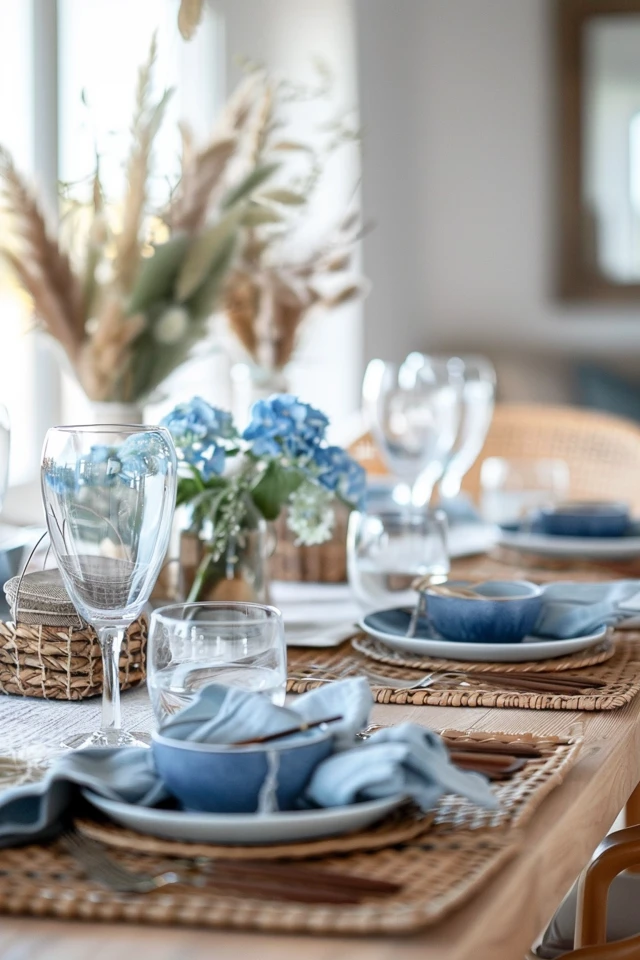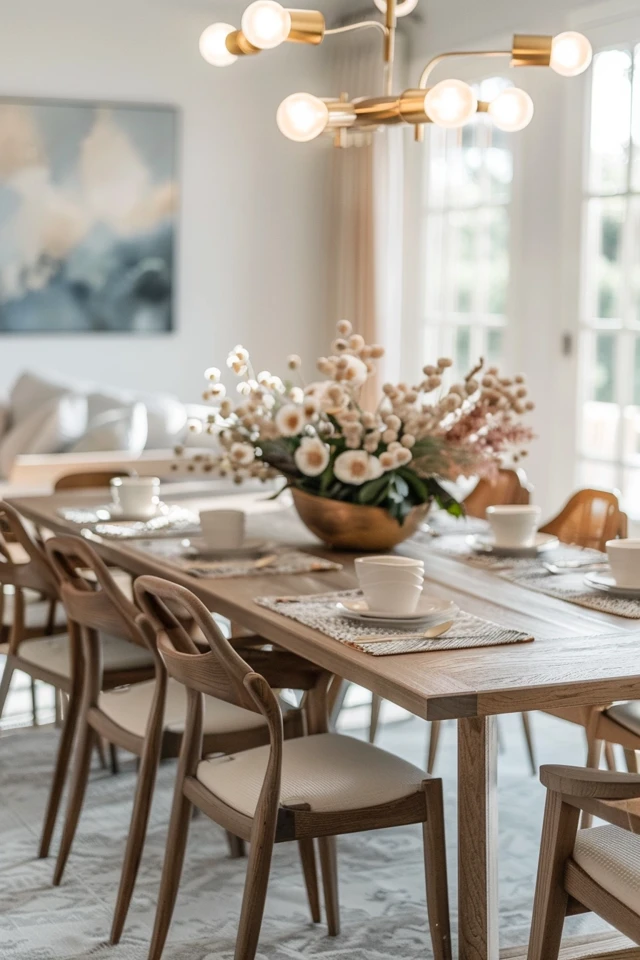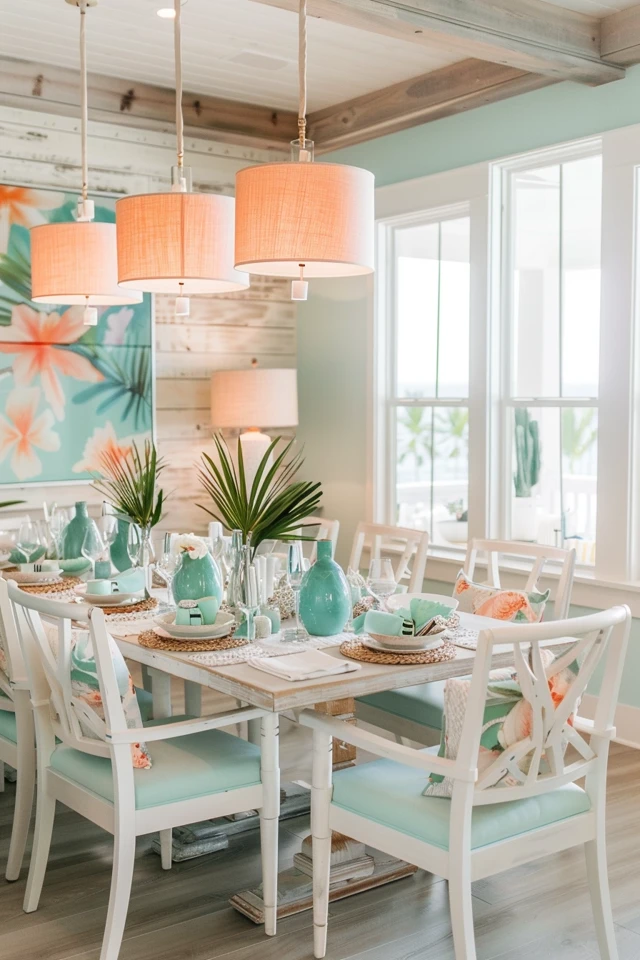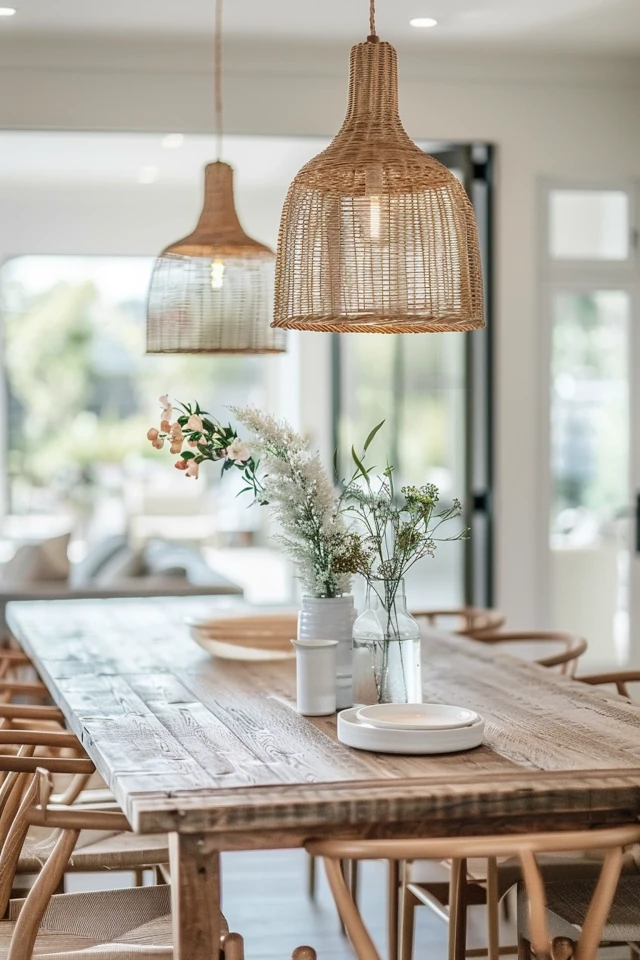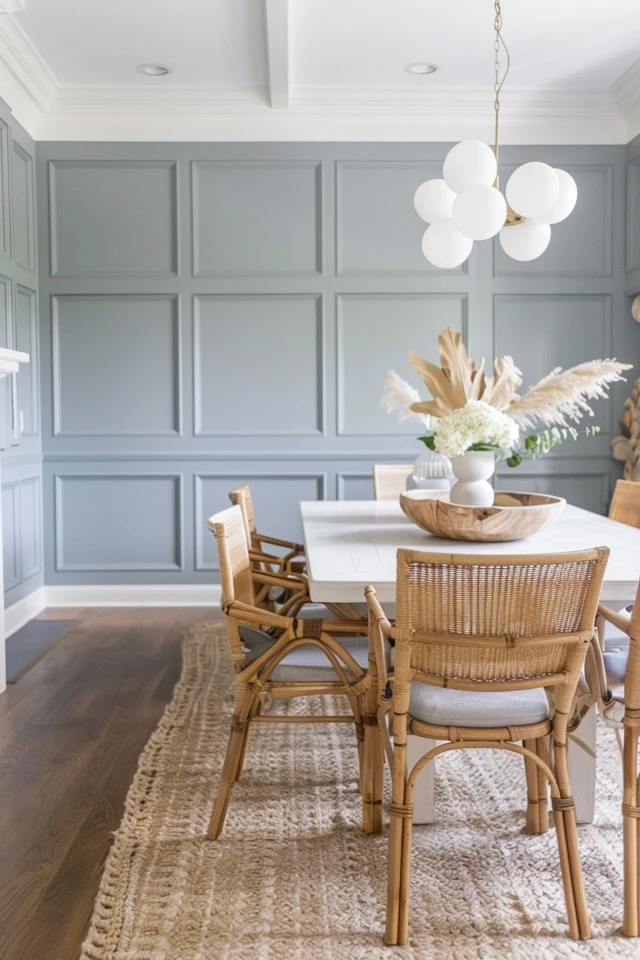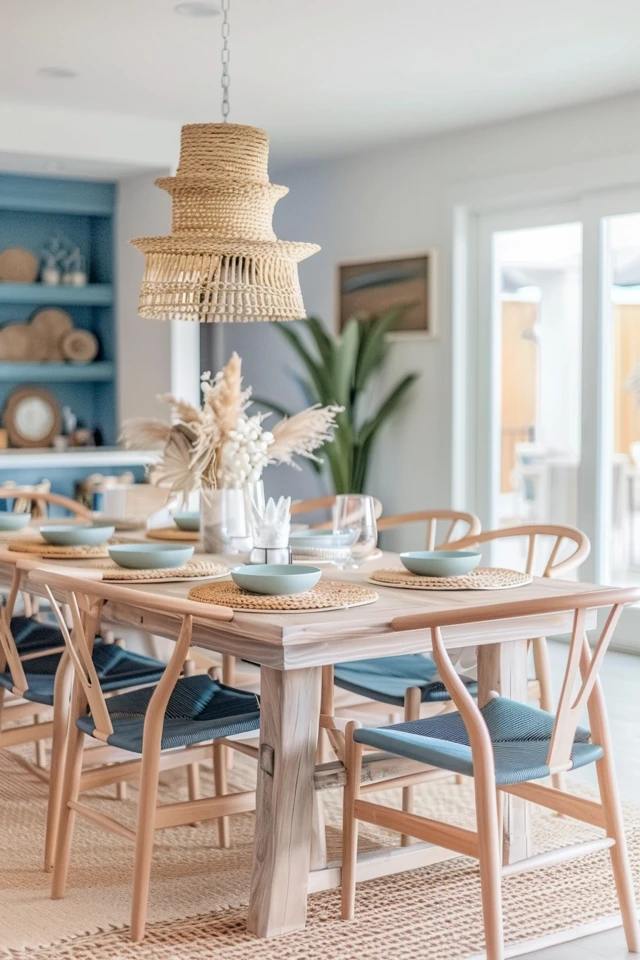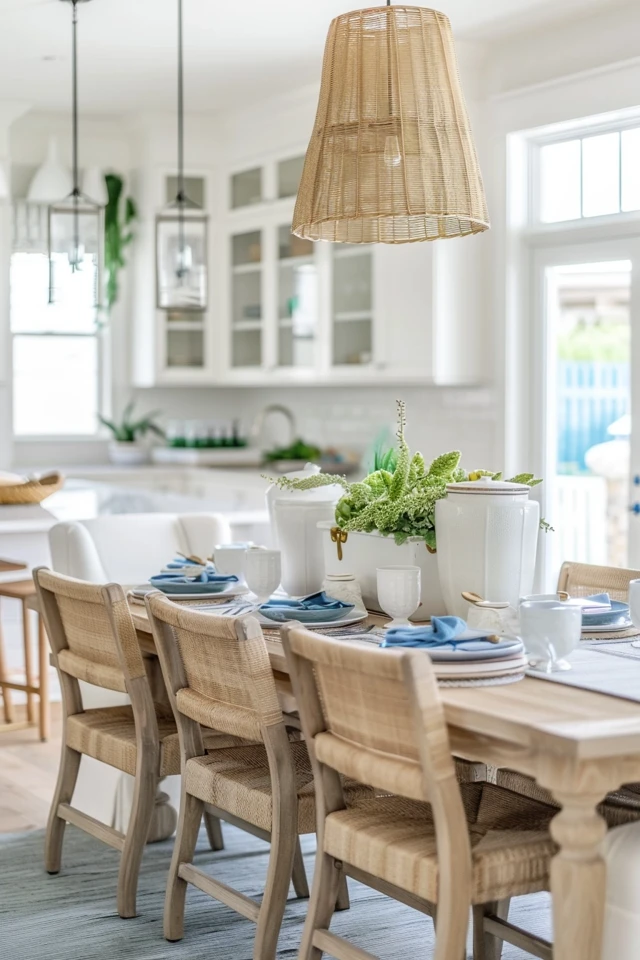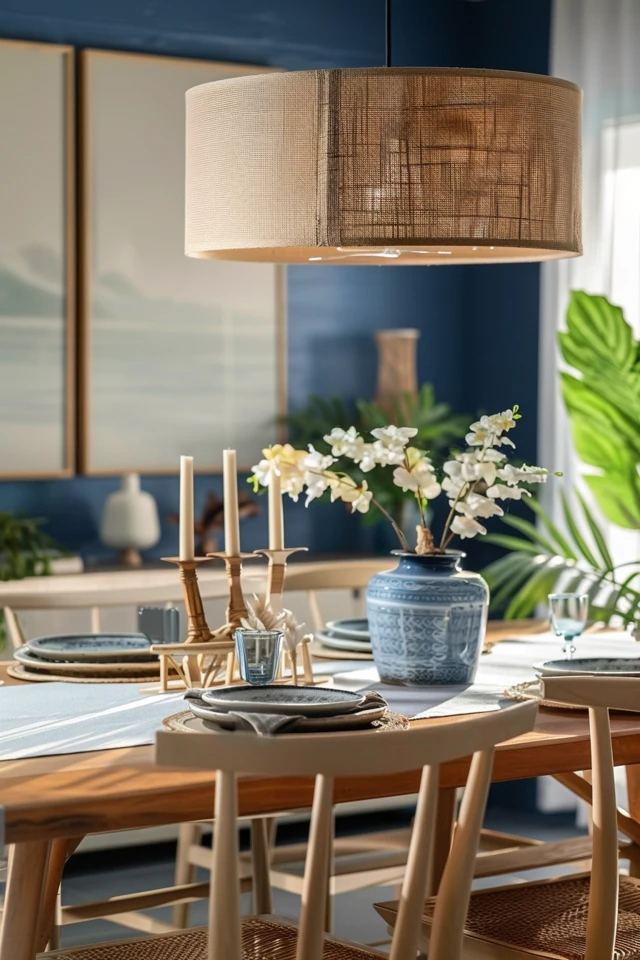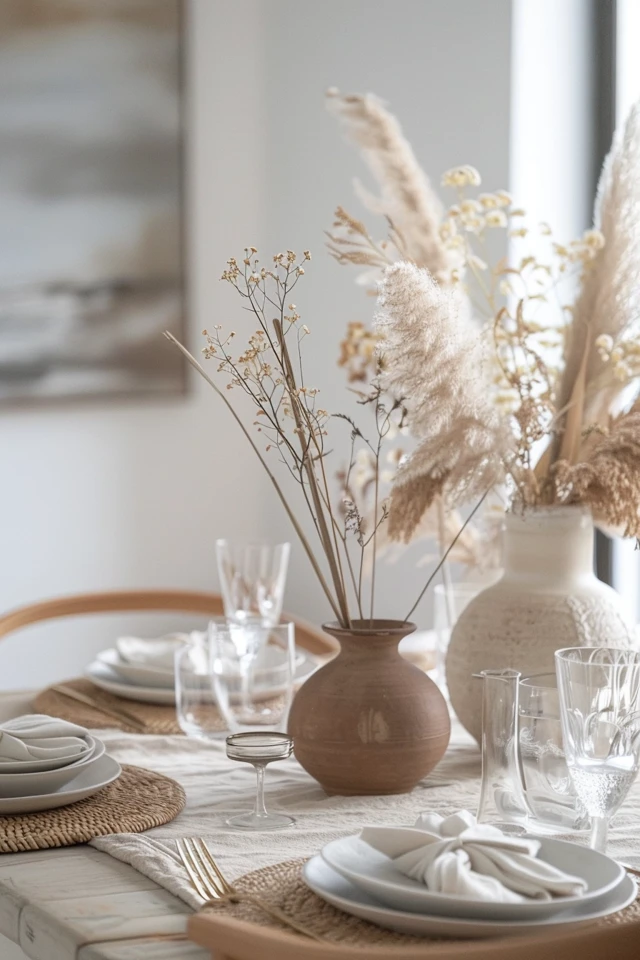The dining room is a place where family and friends gather to share meals and create memories. Transforming this space into a breezy, elegant coastal retreat can elevate the dining experience and bring the calming essence of the seaside into your home. As an architect and interior designer specializing in evidence-based design, I will guide you through the process of creating a coastal dining room that combines functionality with effortless style.
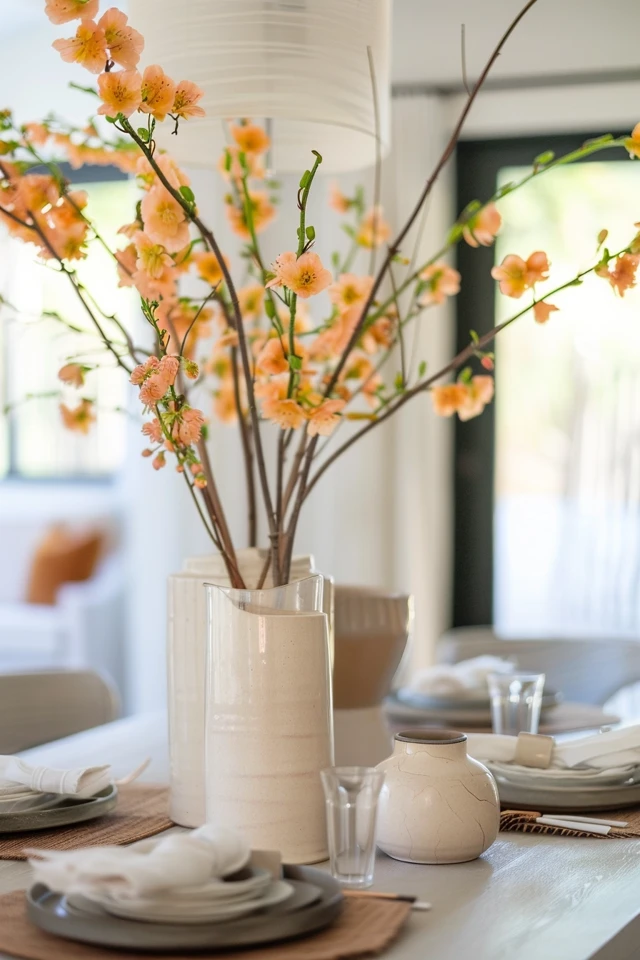
Key Takeaways
- Select a Light and Airy Color Palette: Embrace whites, blues, and sandy neutrals.
- Incorporate Natural Materials: Use wood, rattan, and linen for a relaxed, organic feel.
- Choose Coastal-Inspired Furniture: Opt for pieces with clean lines and nautical touches.
- Add Ocean-Themed Decor and Accessories: Decorate with shells, driftwood, and marine-inspired art.
- Maintain a Clutter-Free and Spacious Layout: Prioritize minimalism and smart storage solutions.
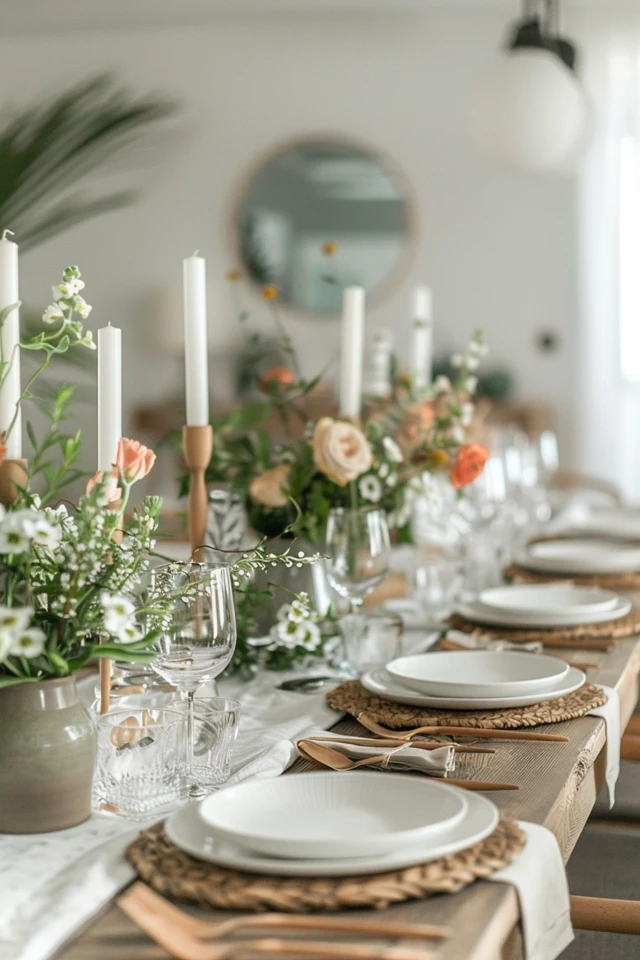
1. Select a Light and Airy Color Palette
A coastal dining room should evoke the breezy and open feeling of the beach. Achieving this starts with your choice of color palette. Whites, blues, and sandy neutrals form the foundation of coastal design, creating a serene and inviting atmosphere.
For the walls, consider shades of white or very light blue to set a fresh and calming backdrop. You can add depth and interest with an accent wall featuring a soft blue or light gray hue. White or neutral-colored furniture will help maintain the airy feel, while accents in various shades of blue, from navy to aqua, can provide pops of color.
Additionally, consider using textiles in your chosen color palette for tablecloths, napkins, and chair cushions. These elements can tie the room together and reinforce the coastal theme.
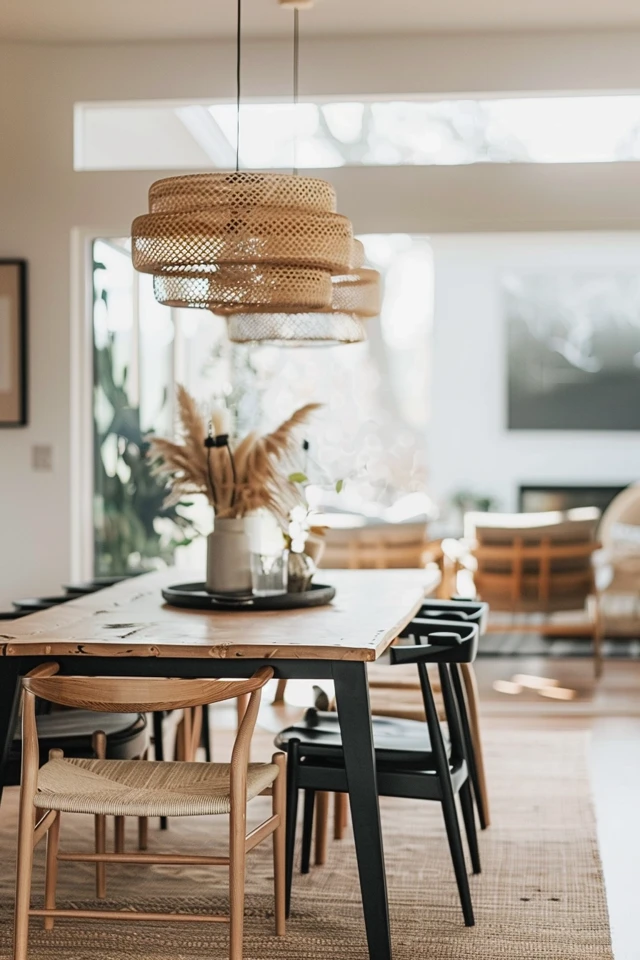
2. Incorporate Natural Materials
Natural materials play a crucial role in creating an authentic coastal dining room. Wood, rattan, and linen add texture and warmth, making the space feel more organic and connected to nature.
Choose a wooden dining table with a distressed or weathered finish to evoke the look of driftwood. Rattan chairs or wicker accents can enhance the beachy feel while adding a touch of elegance. Linen tablecloths, napkins, and placemats not only look beautiful but also contribute to the relaxed, breezy atmosphere.
For flooring, consider natural options like hardwood or bamboo, which can provide a warm and durable foundation for your coastal dining room. Adding a jute or sisal rug can also enhance the texture and comfort underfoot.
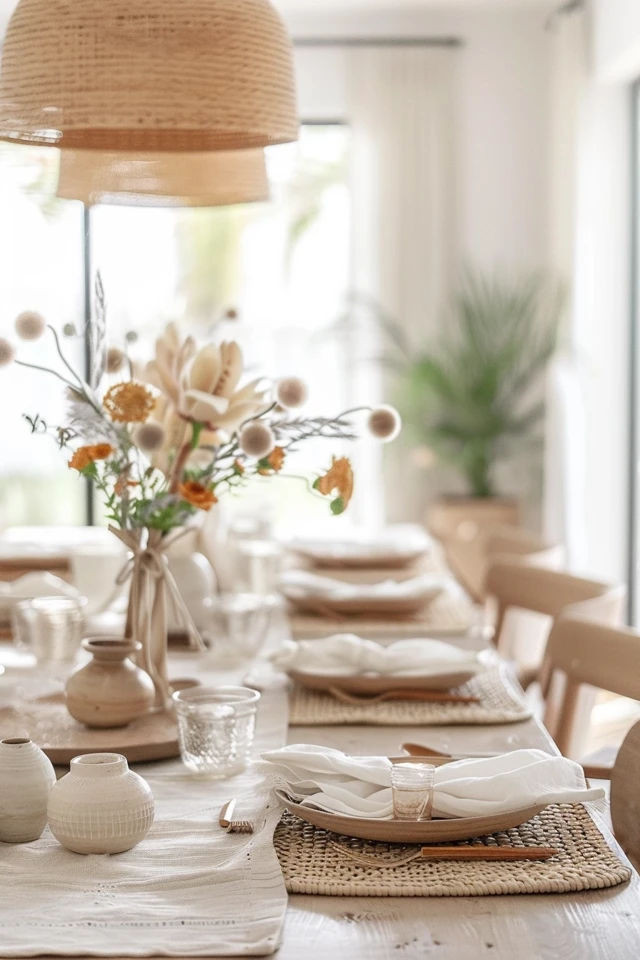
3. Choose Coastal-Inspired Furniture
The furniture in your coastal dining room should reflect the clean lines and relaxed elegance of the beach. Look for pieces that combine functionality with nautical or beachy elements.
A wooden dining table with a simple, classic design can serve as the centerpiece of your dining room. Pair it with chairs that have a coastal touch, such as rattan seats or white slipcovers. Benches can also be a great addition, offering a casual and versatile seating option.
For storage, consider a sideboard or buffet with a distressed finish or a piece that incorporates woven details. This not only provides practical storage but also adds to the coastal charm of the space. Additionally, floating shelves or open cabinets can be used to display beach-inspired decor and dinnerware.
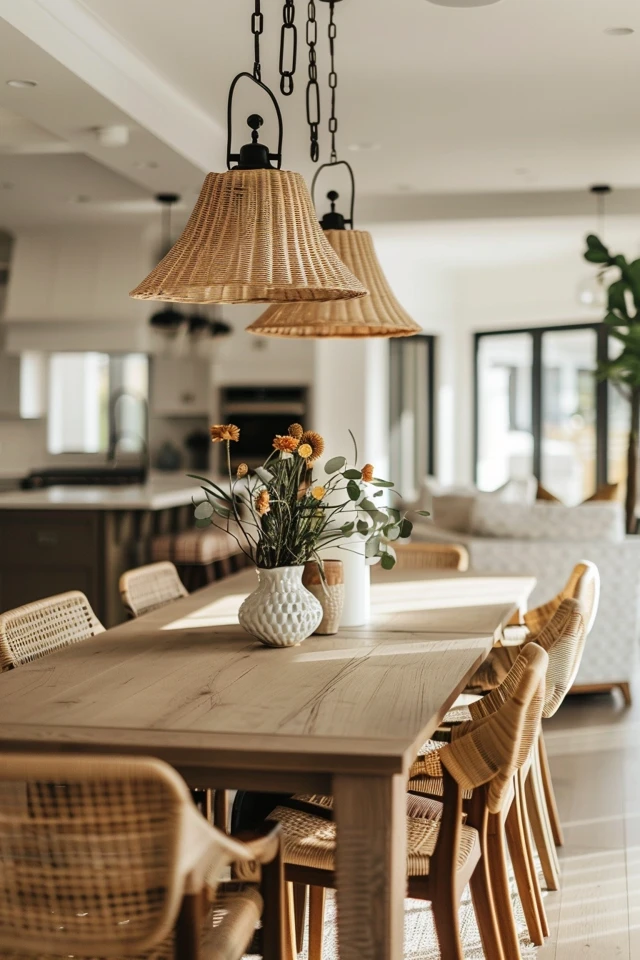
4. Add Ocean-Themed Decor and Accessories
Decor and accessories are where you can infuse your coastal dining room with personality and charm. Look for items that remind you of the beach, such as seashells, driftwood, and marine-inspired art.
Consider creating a centerpiece with a large glass vase filled with sand, shells, and candles. Driftwood can be used creatively as a decorative element, such as a base for a lamp or as wall art. Marine-inspired artwork, such as paintings of sea life or nautical charts, can add a touch of sophistication to your walls.
In addition to decorative items, choose tableware and serving pieces that complement your coastal theme. White or blue ceramic plates, glassware with a subtle tint, and wooden serving utensils can all contribute to the overall aesthetic.

5. Maintain a Clutter-Free and Spacious Layout
A key aspect of coastal design is the sense of openness and tranquility, which can be easily disrupted by clutter. To maintain a serene and spacious dining room, focus on minimalism and smart storage solutions.
Start by decluttering your dining table and sideboard, keeping only the essentials and a few decorative items. Use built-in storage or floating shelves to keep everything organized and out of sight. Consider multifunctional furniture, such as a sideboard that doubles as a bar or a dining table with built-in storage, to maximize space without adding bulk.
Additionally, ensure that the layout of your dining room allows for easy movement and flow. Arrange furniture to create a welcoming and open environment, and avoid overcrowding the space with too many pieces.
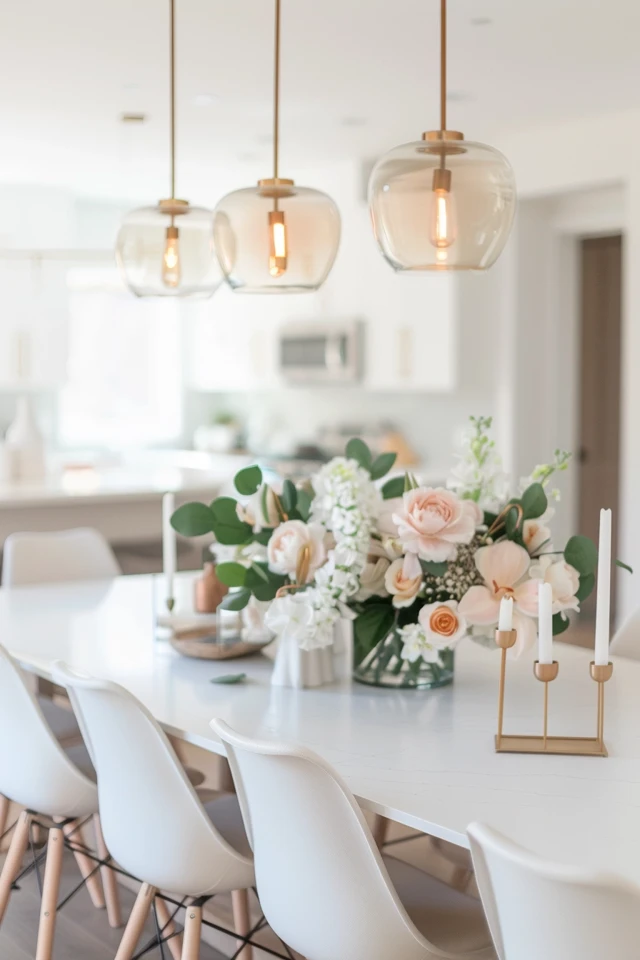
Conclusion
Creating a coastal dining room is about more than just aesthetics; it’s about crafting a space that feels inviting, relaxing, and connected to nature. By selecting a light and airy color palette, incorporating natural materials, choosing coastal-inspired furniture, adding ocean-themed decor and accessories, and maintaining a clutter-free and spacious layout, you can transform your dining room into a breezy, elegant retreat.
As an architect and interior designer with a focus on evidence-based design, I can attest to the positive impact that a well-designed coastal dining room can have on your daily life. The soothing colors, natural materials, and thoughtful decor choices not only create a beautiful space but also promote a sense of well-being and relaxation.
Whether you’re hosting a dinner party or enjoying a quiet meal with family, a coastal dining room provides the perfect backdrop for memorable moments. With a little creativity and attention to detail, you can achieve the coastal dining room of your dreams, bringing the beauty and tranquility of the beach into your home every day.
Inspirational Pictures

